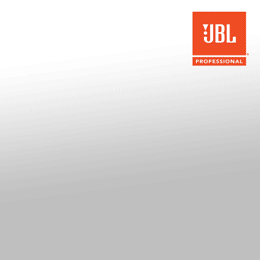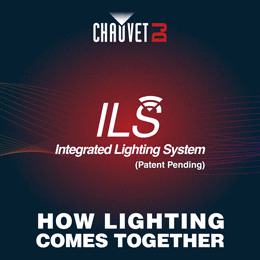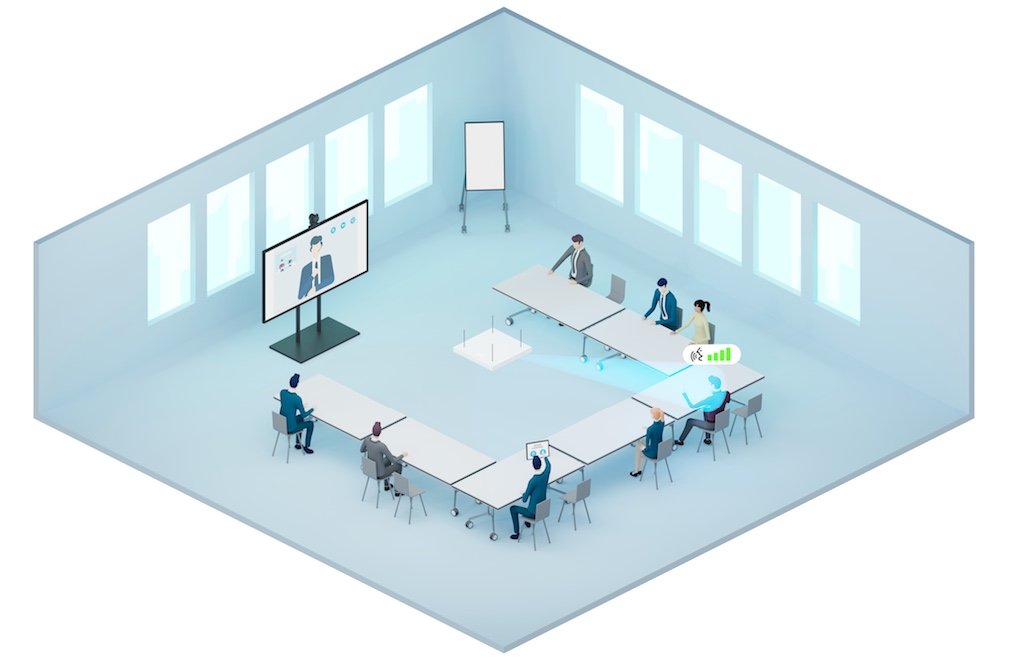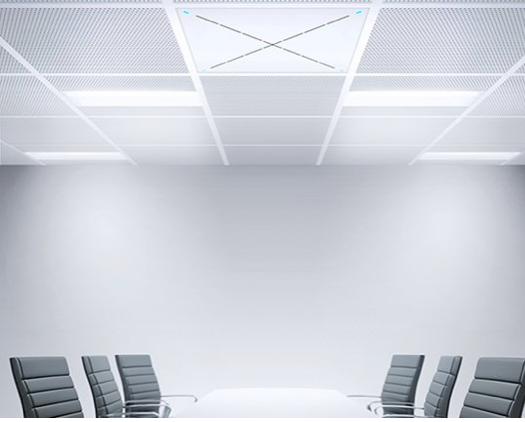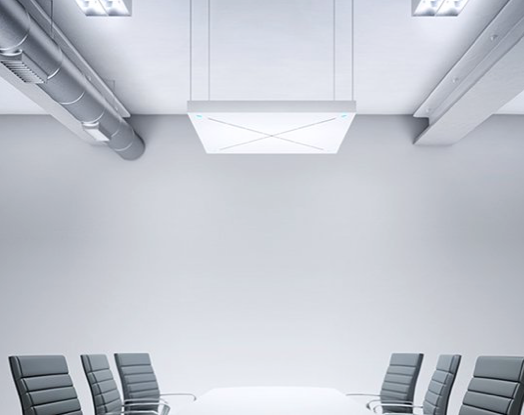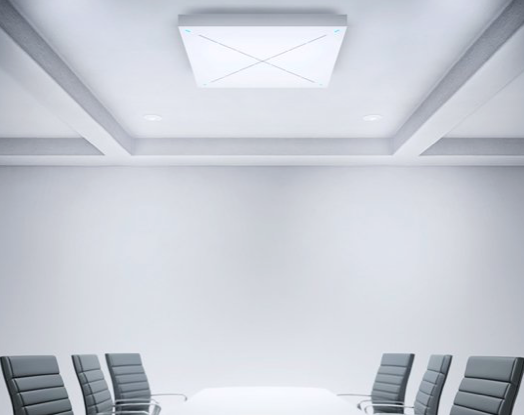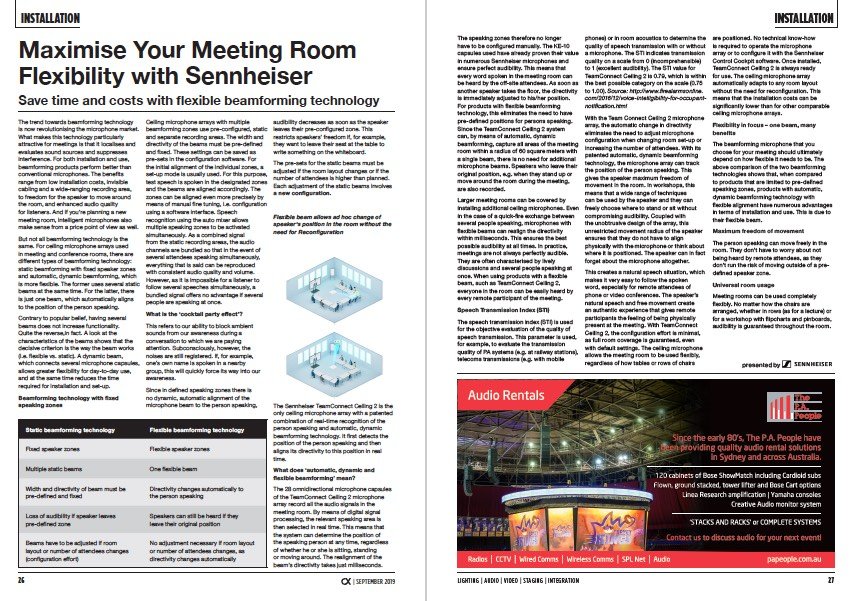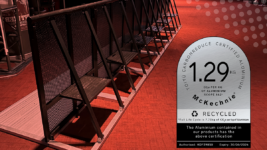Subscribe to CX E-News
INSTALLATION
Save time and costs with flexible beamforming technology

The trend towards beamforming technology is now revolutionising the microphone market. What makes this technology particularly attractive for meetings is that it localises and evaluates sound sources and suppresses interference.
For both installation and use, beamforming products perform better than conventional microphones. The benefits range from low installation costs, invisible cabling and a wide-ranging recording area, to freedom for the speaker to move around the room, and enhanced audio quality
for listeners.
And if you‘re planning a new meeting room, intelligent microphones also make sense from a price point of view as well.
But not all beamforming technology is the same. For ceiling microphone arrays used in meeting and conference rooms, there are different types of beamforming technology: static beamforming with fixed speaker zones and automatic, dynamic beamforming, which is more flexible. The former uses several static beams at the same time. For the latter, there is just one beam, which automatically aligns to the position of the person speaking.
Contrary to popular belief, having several beams does not increase functionality. Quite the reverse, in fact. A look at the characteristics of the beams shows that the decisive criterion is the way the beam works (i.e. flexible vs. static).
A dynamic beam, which connects several microphone capsules, allows greater flexibility for day-to-day use, and at the same time reduces the time required for installation and set-up.
Beamforming technology with fixed speaking zones
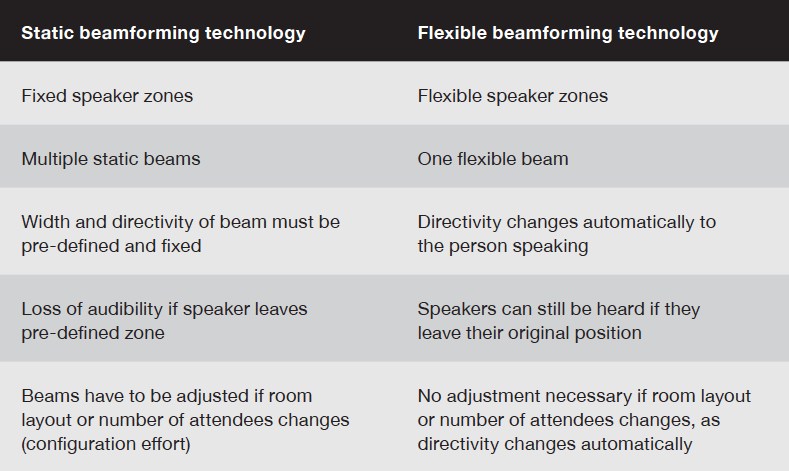
Ceiling microphone arrays with multiple beamforming zones use pre-configured, static and separate recording areas. The width and directivity of the beams must be pre-defined and fixed. These settings can be saved as pre-sets in the configuration software.
For the initial alignment of the individual zones, a set-up mode is usually used. For this purpose, test speech is spoken in the designated zones and the beams are aligned accordingly. The zones can be aligned even more precisely by means of manual fine tuning, i.e. configuration using a software interface.
Speech recognition using the auto mixer allows multiple speaking zones to be activated simultaneously. As a combined signal from the static recording areas, the audio channels are bundled so that in the event of several attendees speaking simultaneously, everything that is said can be reproduced with consistent audio quality and volume. However, as it is impossible for a listener to follow several speeches simultaneously, a bundled signal offers no advantage if several people are speaking at once.
What is the ‘cocktail party effect’?
This refers to our ability to block ambient sounds from our awareness during a conversation to which we are paying attention. Subconsciously, however, the noises are still registered. If, for example, one’s own name is spoken in a nearby group, this will quickly force its way into our awareness.
Since in defined speaking zones there is no dynamic, automatic alignment of the microphone beam to the person speaking, audibility decreases as soon as the speaker leaves their pre-configured zone. This restricts speakers’ freedom if, for example, they want to leave their seat at the table to write something on the whiteboard.
The pre-sets for the static beams must be adjusted if the room layout changes or if the number of attendees is higher than planned. Each adjustment of the static beams involves a new configuration.
Flexible beam allows ad hoc change of speaker’s position in the room without the need for Reconfiguration
The Sennheiser TeamConnect Ceiling 2 is the only ceiling microphone array with a patented combination of real-time recognition of the person speaking and automatic, dynamic beamforming technology. It first detects the position of the person speaking and then aligns its directivity to this position in real time.
What does ‘automatic, dynamic and flexible beamforming’ mean?
The 28 omnidirectional microphone capsules of the TeamConnect Ceiling 2 microphone array record all the audio signals in the meeting room. By means of digital signal processing, the relevant speaking area is then selected in real time. This means that the system can determine the position of the speaking person at any time, regardless of whether he or she is sitting, standing or moving around.
The realignment of the beam’s directivity takes just milliseconds. The speaking zones therefore no longer have to be configured manually.
The KE-10 capsules used have already proven their value in numerous Sennheiser microphones and ensure perfect audibility. This means that every word spoken in the meeting room can be heard by the off-site attendees. As soon as another speaker takes the floor, the directivity is immediately adjusted to his/her position. For products with flexible beamforming technology, this eliminates the need to have pre-defined positions for persons speaking.
Since the TeamConnect Ceiling 2 system can, by means of automatic, dynamic beamforming, capture all areas of the meeting room within a radius of 60 square meters with a single beam, there is no need for additional microphone beams. Speakers who leave their original position, e.g. when they stand up or move around the room during the meeting, are also recorded.
Larger meeting rooms can be covered by installing additional ceiling microphones. Even in the case of a quick-fire exchange between several people speaking, microphones with flexible beams can realign the directivity within milliseconds. This ensures the best possible audibility at all times.
In practice, meetings are not always perfectly audible. They are often characterised by lively discussions and several people speaking at once. When using products with a flexible beam, such as TeamConnect Ceiling 2, everyone in the room can be easily heard by every remote participant of the meeting.
Speech Transmission Index (STI)
The speech transmission index (STI) is used for the objective evaluation of the quality of speech transmission. This parameter is used, for example, to evaluate the transmission quality of PA systems (e.g. at railway stations), telecoms transmissions (e.g. with mobile phones) or in room acoustics to determine the quality of speech transmission with or without a microphone.
The STI indicates transmission quality on a scale from 0 (incomprehensible) to 1 (excellent audibility). The STI value for TeamConnect Ceiling 2 is 0.79, which is within the best possible category on the scale (0.75 to 1.00).
Source: http://www.firealarmsonline.com/2016/12/voice-intelligibility-for-occupant-notification.html
With the Team Connect Ceiling 2 microphone array, the automatic change in directivity eliminates the need to adjust microphone configuration when changing room set-up or increasing the number of attendees.
With its patented automatic, dynamic beamforming technology, the microphone array can track the position of the person speaking. This gives the speaker maximum freedom of movement in the room. In workshops, this means that a wide range of techniques can be used by the speaker and they can freely choose where to stand or sit without compromising audibility.
Coupled with the unobtrusive design of the array, this unrestricted movement radius of the speaker ensures that they do not have to align physically with the microphone or think about where it is positioned. The speaker can in fact forget about the microphone altogether.
This creates a natural speech situation, which makes it very easy to follow the spoken word, especially for remote attendees of phone or video conferences. The speaker’s natural speech and free movement create an authentic experience that gives remote participants the feeling of being physically present at the meeting.
With TeamConnect Ceiling 2, the configuration effort is minimal, as full room coverage is guaranteed, even with default settings. The ceiling microphone allows the meeting room to be used flexibly, regardless of how tables or rows of chairs are positioned.
No technical know-how is required to operate the microphone array or to configure it with the Sennheiser Control Cockpit software. Once installed, TeamConnect Ceiling 2 is always ready for use. The ceiling microphone array automatically adapts to any room layout without the need for reconfiguration. This means that the installation costs can be significantly lower than for other comparable ceiling microphone arrays.
Flexibility in focus – one beam, many benefits
The beamforming microphone that you choose for your meeting should ultimately depend on how flexible it needs to be. The above comparison of the two beamforming technologies shows that, when compared to products that are limited to pre-defined speaking zones, products with automatic, dynamic beamforming technology with flexible alignment have numerous advantages in terms of installation and use. This is due to their flexible beam.
Maximum freedom of movement
The person speaking can move freely in the room. They don’t have to worry about not being heard by remote attendees, as they don’t run the risk of moving outside of a pre-defined speaker zone.
Universal room usage
Meeting rooms can be used completely flexibly. No matter how the chairs are arranged, whether in rows (as for a lecture) or for a workshop with flipcharts and pinboards, audibility is guaranteed throughout the room.
CX Magazine – Sept 2019 Entertainment technology news and issues for Australia and New Zealand – in print and free online www.cxnetwork.com.au
© CX Media
Related reading – ‘Do you understand? Intelligibility‘ by Simon Byrne about STI and measuring intelligibility – Sept CX Magazine.
Subscribe
Published monthly since 1991, our famous AV industry magazine is free for download or pay for print. Subscribers also receive CX News, our free weekly email with the latest industry news and jobs.




